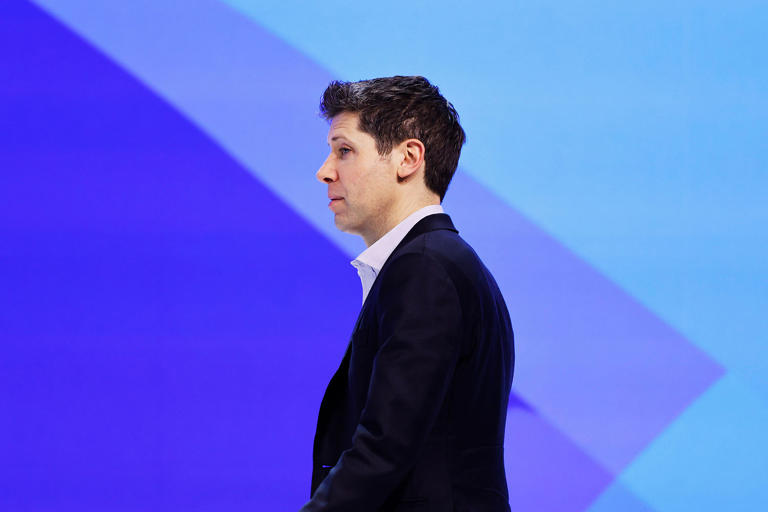OpenAI, AI safety, AI risks, Ilya Sutskever, Jan Leike, Sam Altman, Superalignment team, artificial intelligence, AI development, AI governance, AI ethics, OpenAI leadership crisis
OpenAI has disbanded its team focused on long-term AI risks, less than a year after its formation. Discover the reasons behind this decision, the implications for AI safety and governance, and what it means for the future of artificial intelligence development.

In a surprising turn of events, OpenAI has disbanded its team focused on the long-term risks of artificial intelligence, less than a year after its establishment. The decision, confirmed by a source to CNBC, marks a significant shift in the company’s approach to AI safety and governance. This article delves into the implications of this move, the reasons behind it, and what it means for the future of AI development.
The Formation and Dissolution of the Superalignment Team
OpenAI’s Superalignment team was formed with a mission to achieve scientific and technical breakthroughs that would enable the control of AI systems far surpassing human intelligence. The initiative was a major commitment, with OpenAI pledging 20% of its computing power to this effort over four years. However, the team’s disbandment, first reported by Wired, suggests a re-evaluation of priorities within the company.
Leadership Departures and Internal Disagreements
The disbandment comes on the heels of high-profile departures, including OpenAI co-founder Ilya Sutskever and Jan Leike, who led the Superalignment team. Both leaders announced their exits on the social media platform X, citing fundamental disagreements with OpenAI’s leadership over the company’s core priorities.
Jan Leike’s departure was particularly revealing. In his post on X, he expressed frustration with the company’s shifting focus away from safety and societal impact toward more commercially viable products. Leike argued that OpenAI needs to prioritize security, monitoring, preparedness, and societal impact to ensure that AI development does not outpace necessary safety measures.
The Broader Context: OpenAI’s Leadership Crisis
These developments are not occurring in a vacuum. OpenAI has recently experienced significant internal turmoil, including a leadership crisis involving CEO Sam Altman. In November, Altman was ousted by OpenAI’s board over concerns about his communication with the board. This decision led to a cascade of resignations and public outcry, culminating in Altman’s reinstatement and the departure of several board members who had supported his removal.
This leadership instability has exacerbated internal tensions about the direction and priorities of the company. Sutskever, who initially supported Altman’s ouster, later expressed a desire to continue working with him, highlighting the complex dynamics at play within OpenAI’s leadership.
Shifting Priorities: From Safety to Product Development
The dissolution of the Superalignment team and the departures of Sutskever and Leike underscore a broader shift within OpenAI from a focus on long-term safety to immediate product development. This pivot is evident in the company’s recent announcements, including the launch of a new AI model and an updated version of ChatGPT.
The new model, GPT-4o, promises enhanced capabilities in text, video, and audio, and is designed to be much faster than its predecessors. OpenAI has also introduced a desktop version of ChatGPT and plans to enable video chat functionality, emphasizing ease of use and broad accessibility. These developments indicate a strategic emphasis on expanding the user base and increasing the practical applications of AI technology.
Implications for AI Safety and Governance
The disbandment of the Superalignment team raises critical questions about the future of AI safety and governance. The team was intended to address the profound challenges posed by AI systems that could surpass human intelligence. Its dissolution suggests that OpenAI may be deprioritizing these long-term risks in favor of more immediate technological advancements.
Leike’s concerns about the lack of focus on safety are particularly pertinent. He warned that building smarter-than-human machines is inherently dangerous and that OpenAI has a significant responsibility to manage these risks on behalf of humanity. The struggle for computing resources and the internal disagreements over priorities suggest that OpenAI may be struggling to balance its dual goals of advancing AI capabilities and ensuring their safe deployment.
Future Directions for OpenAI
Despite the recent turmoil, OpenAI remains a leading force in AI research and development. The company’s ability to navigate these challenges will be crucial in determining its future trajectory. Here are some potential directions OpenAI might take:
- Reintegration of Safety Research: OpenAI could re-integrate safety research into its broader R&D efforts, ensuring that safety considerations are embedded in all aspects of AI development rather than being siloed in a separate team.
- External Collaboration: Collaborating with external organizations, including academic institutions and other AI research labs, could help OpenAI address the long-term risks of AI. This approach might also mitigate some of the internal resource constraints highlighted by Leike.
- Enhanced Governance Structures: Strengthening governance structures and establishing clearer communication channels between leadership and research teams could help align priorities and ensure that safety remains a central focus.
- Public Engagement: Increasing transparency and engaging more actively with the public and regulatory bodies could help OpenAI build trust and ensure that its AI developments align with societal values and expectations.
Conclusion
The dissolution of OpenAI’s Superalignment team and the departures of key leaders like Ilya Sutskever and Jan Leike mark a pivotal moment for the company. As OpenAI continues to push the boundaries of AI technology, it must also address the profound ethical and safety challenges that come with these advancements. Balancing innovation with responsibility will be critical to ensuring that AI serves humanity positively and safely.
OpenAI’s journey underscores the complexities and challenges inherent in leading the AI revolution. The company’s future actions will be closely watched as they will not only shape the trajectory of AI development but also influence the broader discourse on AI ethics and governance.
Read More-